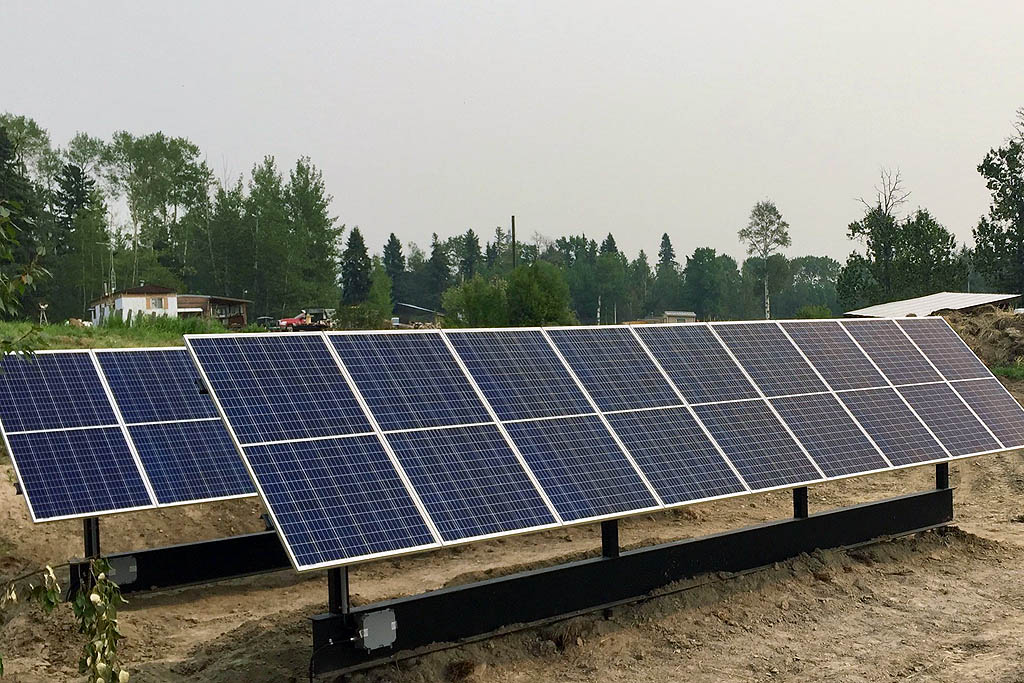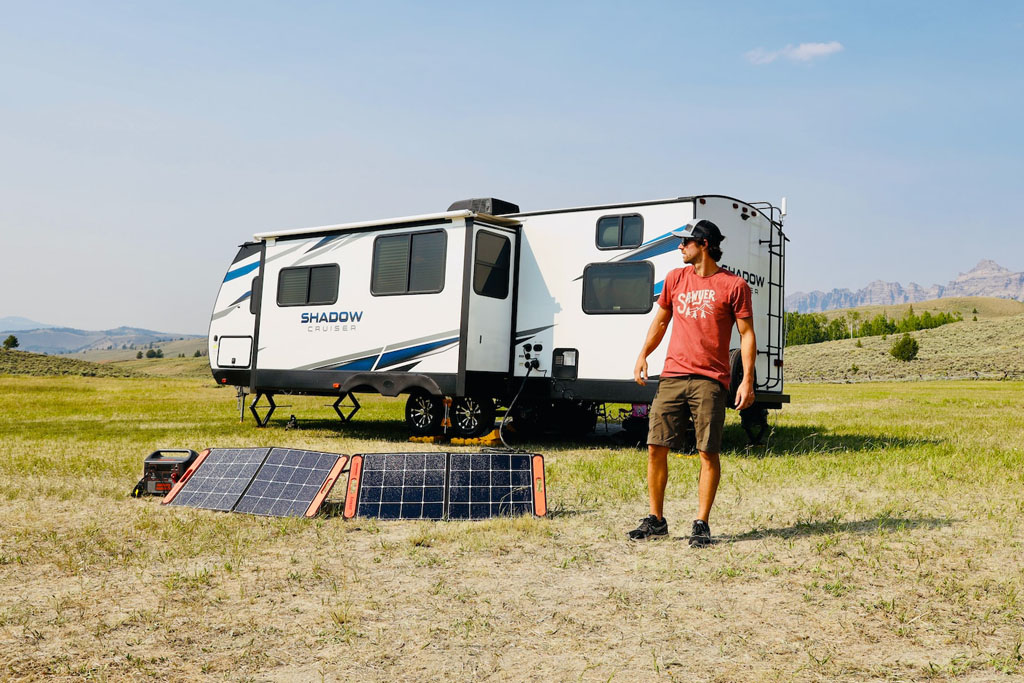Oftentimes, individuals and businesses seeking to create an off-grid solar system face the challenge of designing and sizing their setup efficiently. The process of accurately calculating the required size and designing a layout to maximize efficiency can be complex and overwhelming.
In this post, we will discuss the key factors and considerations for sizing and designing a solar system, while providing expert guidance on how to achieve maximum efficiency.
Assessing energy needs
Before designing a solar system, it is crucial to accurately assess your energy needs. This step is essential in determining the size and design of your system to ensure maximum efficiency and reliability.
Calculating energy consumption
One of the first steps in assessing energy needs is to calculate your energy consumption. This involves identifying all the electrical appliances and devices that will be powered by your solar system.
Make a list of all your products and personas, including their power ratings and the average daily usage in hours. This information will help you determine the total daily energy consumption of your off-grid system.
Identifying peak load requirements
Calculating the peak load requirements is another crucial step in assessing energy needs for your off-grid solar system. This involves identifying the maximum power demand that your system will need to meet at any given time. To determine this, make a list of all your subjects and appliances that are likely to be used simultaneously, such as air conditioners, refrigerators, and water pumps. Identify the power ratings and sum them to calculate the peak load requirements.
Requirements for peak load should be carefully analyzed, taking into account the specific needs of your location and the seasonal variations in weather and energy usage. It is essential to consider the diverse range of subjects and appliances that may be used at the same time and ensure that your system is designed to meet these peak requirements effectively.

Solar panel selection
Some of the most critical decisions when designing an off-grid solar system involve the selection and sizing of solar panels. Properly choosing and sizing your solar panels is essential for maximizing the efficiency and effectiveness of your system.
Types of solar panels
One of the first decisions to make when selecting solar panels is the type of panel to use. There are several types of solar panels available, including monocrystalline, polycrystalline, and thin-film. Each type has its advantages and disadvantages, and the choice depends on various factors such as cost, space available, and desired efficiency. The following table provides a comparison of these three types of solar panels, highlighting their differences in efficiency, cost, and space requirements.
| Type of Solar Panel | Efficiency |
|---|---|
| Monocrystalline | High |
| Polycrystalline | Moderate |
| Thin-film | Low |
Determining the number of panels needed
Determining the number of panels needed for your off-grid solar system is a crucial step in the design process. The number of panels required depends on the total energy consumption of your household or business, as well as the average daily sunlight available at your location.
Factors such as the tilt of the panels and any shading from nearby trees or buildings should also be taken into account when determining the required number of panels. It is important to conduct a thorough solar site analysis to accurately calculate the number of panels needed for your specific off-grid system.
Panels that are under- or oversized can significantly impact the overall performance and efficiency of your solar system. It is crucial to accurately determine the number of panels needed based on your energy consumption and solar site conditions to ensure optimal system performance and maximum efficiency.
Battery storage solutions
Keep in mind that the battery storage solution is a critical component of your off-grid solar system. It is responsible for storing the energy generated by your solar panels for use during periods of low sunlight or at night. Choosing the right battery storage solution is essential for maximizing the efficiency and effectiveness of your system.

Battery types and efficiencies
For off-grid solar systems, there are different types of batteries available, each with its own set of advantages and disadvantages. It is crucial to understand the efficiencies of these battery types to make an informed decision for your system. Some popular battery types for solar systems include:
- Lead-acid batteries
- Lithium-ion batteries
- Gel batteries
- AGM (Absorbent Glass Mat) batteries
- Flooded batteries
Recognizing the efficiency and performance characteristics of each battery type is essential for selecting the most suitable option for your off-grid solar system.
Sizing the battery bank for your system
For off-grid solar systems, sizing the battery bank correctly is crucial for ensuring a reliable and consistent power supply. The size of the battery bank will depend on factors such as the energy consumption of your system, the number of days of autonomy required, and the charging capacity of your solar panels. It is essential to calculate the optimal size of the battery bank to meet the energy demands of your system efficiently.
System efficiency, energy consumption, and days of autonomy are key factors to consider when sizing the battery bank for your system.
Charge controllers and inverters
Now, when it comes to sizing and designing your off-grid solar system for maximum efficiency, the selection of charge controllers and inverters plays a crucial role. These components are essential for regulating the voltage and current from your solar panels to your batteries, as well as converting the DC power stored in the batteries to AC power for use in your off-grid system. If you want to learn more about how to size a solar system, check out our comprehensive guide How to Size an Off-Grid Solar System.
Choosing the right charge controllers
Charge controllers are responsible for regulating the voltage and current from your solar panels to your batteries. When selecting charge controllers for your off-grid solar system, consider factors such as the maximum PV input voltage, maximum charge current, and system voltage compatibility. It’s essential to choose a charge controller that can handle the maximum input voltage and charge current of your solar array, as well as one that is compatible with the voltage of your battery bank.
Another factor to consider when choosing the right charge controller is whether it offers MPPT (Maximum Power Point Tracking) or PWM (Pulse Width Modulation) technology. MPPT charge controllers are more efficient and can provide a higher charging current to your batteries, making them ideal for larger systems with varying weather conditions and shading. On the other hand, PWM charge controllers are more cost-effective and suitable for smaller off-grid systems with consistent sunlight exposure.
Selecting an inverter for system compatibility
With the inverter being a crucial component of your off-grid solar system, it’s essential to select one that is compatible with your solar array and battery bank. Consider factors such as the inverter’s input voltage range, maximum continuous power output, surge power rating, and AC output voltage and frequency. It’s important to choose an inverter that can handle the maximum power output of your solar array and provide the necessary voltage and frequency for your electrical system.

When selecting an inverter, you also need to decide between a pure sine wave inverter and a modified sine wave inverter. Pure sine wave inverters are more efficient and produce cleaner power, making them suitable for sensitive electronics and appliances. On the other hand, modified sine wave inverters are more affordable and are sufficient for basic electrical devices and lighting in off-grid systems.
Inverters are available in various sizes and configurations, including grid-tie, off-grid, and hybrid models. It’s important to choose an inverter that is suitable for your specific off-grid solar system setup, whether you’re looking to completely disconnect from the utility grid or integrate with it for backup power.
System integration and management
Your off-grid solar system’s efficiency and performance rely heavily on how well its components are integrated and managed. To ensure that your system is working at its maximum potential, it’s important to have a comprehensive understanding of system integration and management. For a detailed guide on sizing and designing your solar system, check out Sizing an Off-grid Solar Power System: 6 Steps on Instructables.
Combining components for optimal performance
Combining solar panels, batteries, charge controllers, and inverters is essential for achieving optimal performance in your off-grid solar system. Each component must be carefully selected and integrated to ensure compatibility and efficiency. Consider the location, climate, and energy consumption patterns of your personas when choosing and integrating components for maximum effectiveness.
It’s also important to regularly monitor the performance of each component to identify any potential issues and make necessary adjustments. By ensuring that all components work seamlessly together, you can maximize the efficiency and longevity of your system.
Monitoring and maintenance tips
Monitoring the performance of your off-grid solar system is crucial for identifying any potential issues before they become serious problems. Regularly check the output of your solar panels, the charge level of your batteries, and the overall functionality of your inverters and charge controllers. Additionally, personas should perform routine maintenance such as cleaning solar panels and tightening electrical connections to ensure optimal performance.
- Regularly monitor the performance of your solar panels, batteries, and inverters.
- Clean and maintain your solar panels to ensure maximum efficiency.
- Must schedule regular maintenance checks to keep your solar system running smoothly.
Monitoring the performance and conducting regular maintenance of your system are essential tasks to ensure long-term efficiency and reliability. By following these tips, personas can maximize the lifespan and performance of their off-grid solar systems, ultimately saving on costs and reducing environmental impact.
Legal considerations and incentives
Despite the many benefits of off-grid solar systems, there are still legal considerations and incentives that need to be taken into account. To ensure that your off-grid solar system is compliant with local regulations and to take advantage of any available incentives, it is crucial to educate yourself on the topic. For more detailed information on the sizing and design of off-grid solar systems, check out our blog post on How to Size Off-Grid Solar Power Systems Like a Pro.
Understanding local regulations
An off-grid solar system must comply with local regulations to ensure safety and adherence to building codes. Understanding the specific regulations in your area is essential to avoid potential legal issues and ensure the longevity of your solar power system. Consulting with a professional who is knowledgeable about local regulations for systems is highly recommended to ensure that your system complies.
Exploring government incentives and rebates
Rebates and incentives offered by the government can significantly offset the initial investment of an off-grid solar system. Many governments provide financial incentives, tax credits, and rebates for individuals and businesses that invest in renewable energy systems. Researching and taking advantage of these incentives can make your system more cost-effective in the long run.
Exploring government incentives and rebates is a vital step in maximizing the efficiency and cost-effectiveness of your system. By taking advantage of these incentives, you can reduce the overall cost of your system and contribute to a more sustainable future.
Conclusion
Drawing together all the information we’ve covered, it’s clear that sizing and designing your off-grid solar system for maximum efficiency requires careful planning and consideration of various factors such as energy usage, sunlight availability, and system components.
By following the guidelines and tips provided in this guide, you can ensure that your off-grid solar system is optimized for efficiency, allowing you to maximize the benefits of solar power while minimizing costs.
Remember to continually monitor and maintain your system to make necessary adjustments and improvements over time. With the right approach, you can create a reliable and sustainable off-grid solar system that meets your energy needs effectively.




